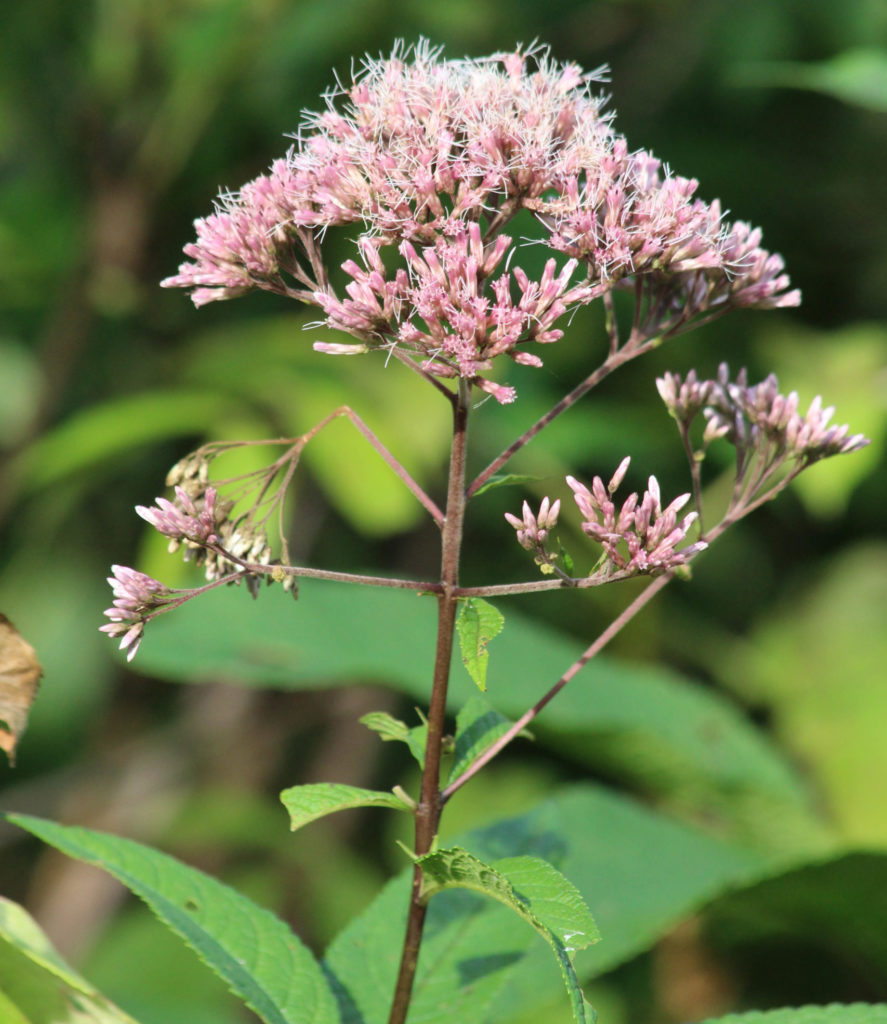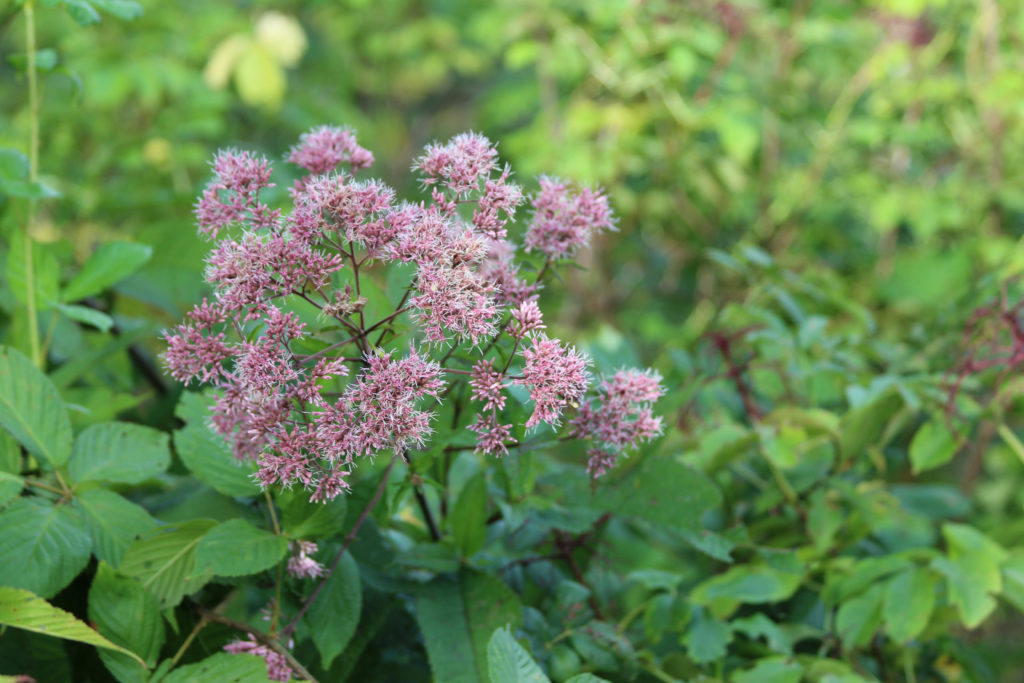
What’s in Bloom | Joe-Pye Weed
- Joe-Pye Weeds (Eutrochium spp.) are a genus of tall perennial wildflowers, native to the eastern United States and Canada.
- Up to 7 feet tall, they produce large clusters of tiny pink flowers in late summer.
- Beautiful and functional in gardens, due to their high value to native wildlife.
Joe-Pye Weeds (Eutrochium spp.) are a genus containing 5 species of tall perennial wildflowers. They are native to the eastern United States and Canada, with the exception of Spotted Joe-Pye Weed (E. maculatum), whose range extends into the western US. All 5 species are native to Virginia, the most widespread being the hollow-stemmed Hollow Joe-Pye Weed (E. fistulosum) and the vanilla-scented Sweet Joe-Pye Weed (E. purpurem). Joe-Pye Weeds’ stalks, which can grow up to 7 feet tall, bear whorls of toothy lance-shaped leaves up to 10 inches long. In late summer, they produce large inflorescences of tiny pink or purple flowers. As with other species in the family Asteraceae, Joe-Pye Weed seeds are attached to a pappus (tuftlike appendage) which allows them to be dispersed by wind.

Though often regarded as a weed, Joe-Pye Weeds can make excellent ornamental plants when planted in groups, as their tall stalks and showy blooms add height and color to garden arrangements. All Joe-Pye Weeds do best in moist soils, but their various light needs, from full sun to shade, allow gardeners to choose one that best suits their space.
Teas made from Joe-Pye Weed have been used by Indigenous Americans to treat a range of conditions, including fevers, colds, digestive upset, and ailments of the liver and kidney. According to folklore, Joe-Pye Weeds were named for a Native American healer from New England who used these plants to cure fevers. However, a 2017 study suggests that these stores were inspired by the historical figure Joseph Shauquethqueat, a sachem or chief of the Mohican tribe, who lived in Massachusetts in the late 1700s and took the Christian name Joe Pye.
Benefits to Biodiversity | All five species of Joe-Pye Weed are visited by native long-tonged bees and butterflies, and are considered species of special value to native bees by the Xerces society. Their stems and leaves host an array of caterpillars and other insect larvae, and their seeds are eaten by swamp sparrows and other seed-eating birds

Sources: 2017 Study, www.wildflower.org, www.illinoiswildflowers.info, www.prairimoon.com, plants.ces.ncsu.edu, https://www.missouribotanicalgarden.org, https://www.minnesotawildflowers.info, https://edgeofthewoodsnursery.com/genus-spotlight-eutrochium-the-joe-pye-weeds, https://www.nrcs.usda.gov/Internet/FSE_PLANTMATERIALS/publications/mdpmcfs8330.pdf